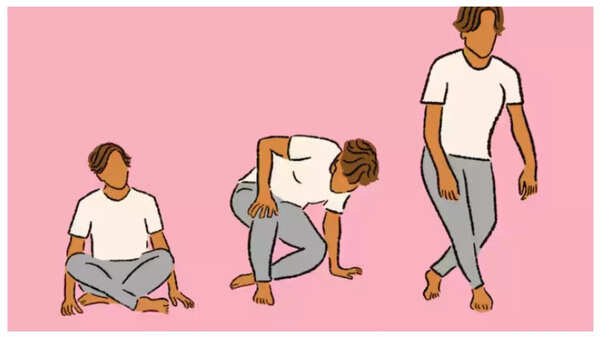Discover How the Sitting-Rising Test Can Predict Your Longevity

Longevity varies from person to person. Factors like age, weight, exercise, genetics, and where you live play a big role. While no test can tell you exactly how long you’ll live, some can give you a good guess. The Sitting-Rising Test (SRT) is one of those tests.
What is the Sitting-Rising Test (SRT)?
The SRT is a simple test that can give you an idea of your risk of death and how long you might live. It checks how well you can sit down on the floor and then stand back up without using your hands, knees, or other support. This test looks at important parts of physical fitness like muscle strength, flexibility, balance, and coordination, all of which are key for living a long life.
Who Developed It?
Researchers from Brazil created the SRT in the 1990s. They wanted a way to check the overall health of older adults. The test is simple: sit down on the floor and then stand back up using as little support as possible. You get scored out of 10 points—5 for sitting down and 5 for standing up.

You lose points each time you use a hand, forearm, knee, or the side of your leg for support. You also lose half a point if you lose your balance. The goal is to do the test smoothly without needing extra help.
How to Do the Test
To do the test, start by standing. Sit down on the floor, usually cross-legged or in a comfortable position, and then stand back up. Don’t worry about speed; just try to do it smoothly. Make sure you’re on a non-slippery surface. You can try the test a few times to improve your score. Your best score from sitting and standing is combined to give you a final score out of 10.
How Does It Predict Longevity?
Many studies have found a strong link between SRT scores and the risk of death, especially from heart problems. The test looks at several parts of physical health:
- Muscle strength and power: Needed to control your movements and stand up from the floor.
- Flexibility: Helps you move smoothly between sitting and standing.
- Balance: Prevents falls and injuries.
- Coordination: Makes sure you can move well without support.
These abilities tend to get worse as we age and with chronic diseases. So, your SRT score can show how well your muscles and bones are working and your overall functional health. People who score low on the test are more likely to have health problems that increase their risk of death.
What Your Score Means
- 8 to 10 points: Great physical fitness and lower risk of death.
- 5 to 7 points: Okay fitness; some risk of health problems.
- 0 to 4 points: Poor fitness; much higher risk of death, especially from heart problems.
The test is very helpful for older adults. It can find those who might need help to improve their strength, balance, and flexibility to lower their health risks.

Other Tests
Unlike tests that only look at aerobic fitness (like walking or running endurance), the SRT checks non-aerobic fitness parts that are important for daily activities and independence. It combines muscle strength, flexibility, balance, and coordination in one quick test without needing any equipment.
Other tests related to longevity include standing on one leg for 10 seconds, grip strength, and the six-minute walk test. But the SRT is very accurate because it shows your whole-body functional fitness, which is a strong predictor of healthy aging.



